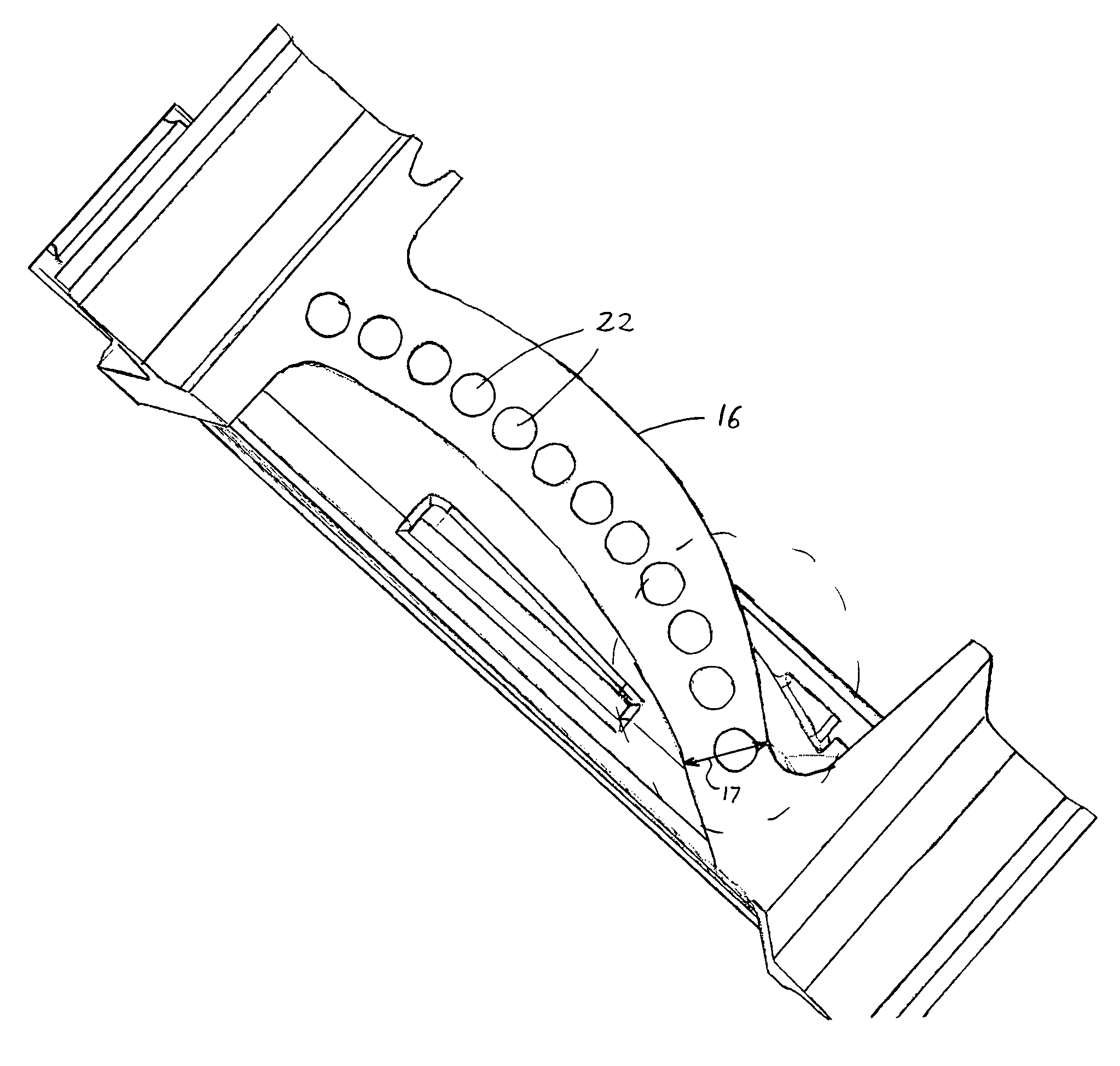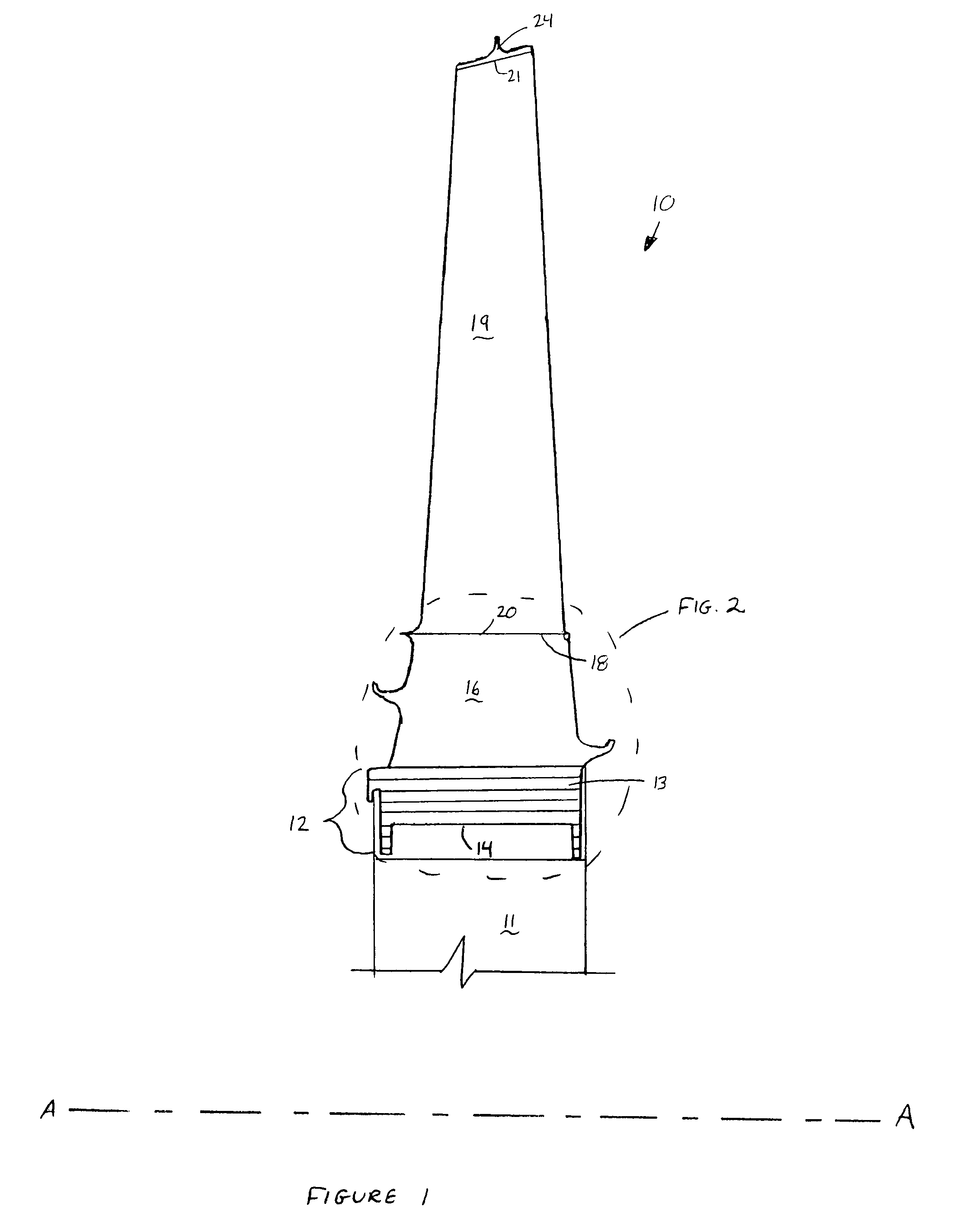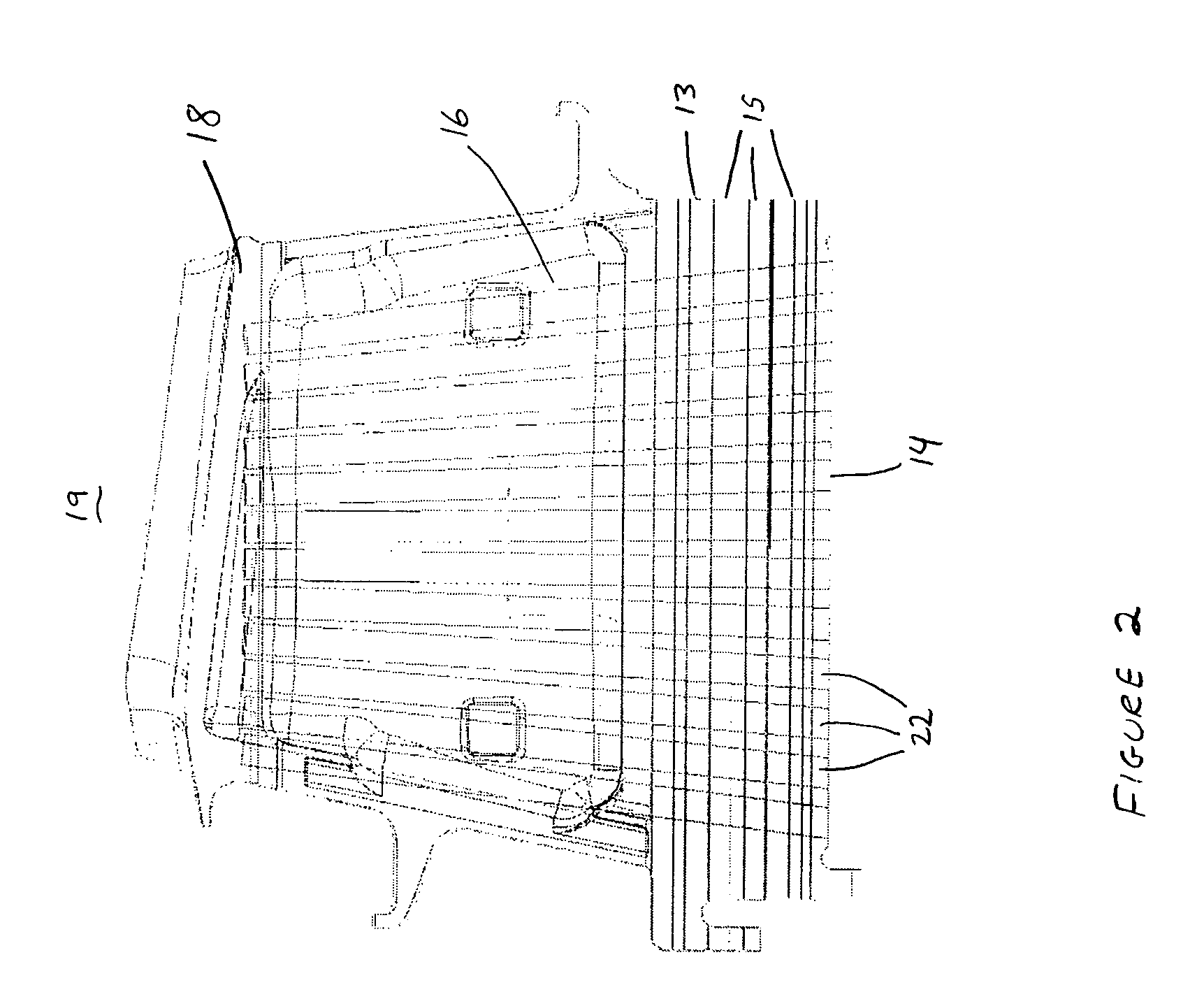Turbine blade attachment lightening holes
a technology of turbine blades and lightening holes, which is applied in the field of turbine blades, can solve the problems of increased creep capability, lower component life, and higher stress, and achieve the effects of improving creep resistance, maintaining mechanical load and stress levels
- Summary
- Abstract
- Description
- Claims
- Application Information
AI Technical Summary
Benefits of technology
Problems solved by technology
Method used
Image
Examples
Embodiment Construction
[0018]Referring to FIG. 1, a turbine blade 10, in accordance with the preferred embodiment, is shown in a portion of a turbine disk 11 for rotation about an axis A—A in a turbine section of a gas turbine engine. Turbine blade 10 has been configured to have an increased resistance to creep while generally maintaining operating stress levels at interface region 12 between turbine blade 10 and mating turbine disk 11.
[0019]Referring now to FIGS. 1 and 2, turbine blade 10 comprises an attachment 13 having a generally planar first surface 14 parallel to axis A—A and a plurality of axially extending serrations 15 for engagement with turbine disk 11. Extending generally radially outward from and fixed to attachment 13 is neck 16, which has a region of minimum thickness 17 (see FIG. 3). Referring back to FIG. 1, a platform 18 is fixed to and extends generally radially outward from neck 16. Extending generally radially outward from platform 18 is an airfoil 19 having a first end 20 and a seco...
PUM
 Login to View More
Login to View More Abstract
Description
Claims
Application Information
 Login to View More
Login to View More - R&D
- Intellectual Property
- Life Sciences
- Materials
- Tech Scout
- Unparalleled Data Quality
- Higher Quality Content
- 60% Fewer Hallucinations
Browse by: Latest US Patents, China's latest patents, Technical Efficacy Thesaurus, Application Domain, Technology Topic, Popular Technical Reports.
© 2025 PatSnap. All rights reserved.Legal|Privacy policy|Modern Slavery Act Transparency Statement|Sitemap|About US| Contact US: help@patsnap.com



